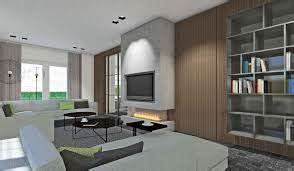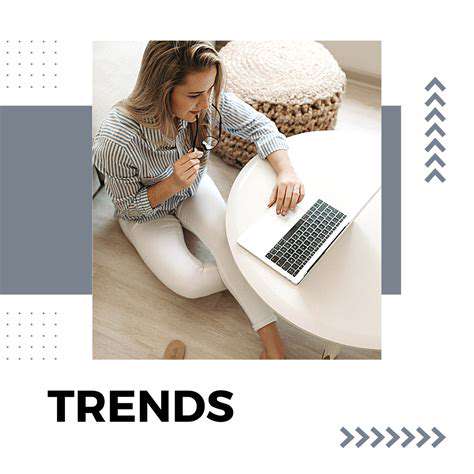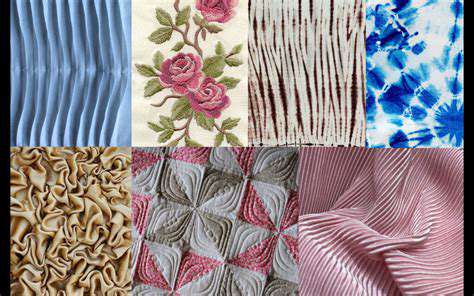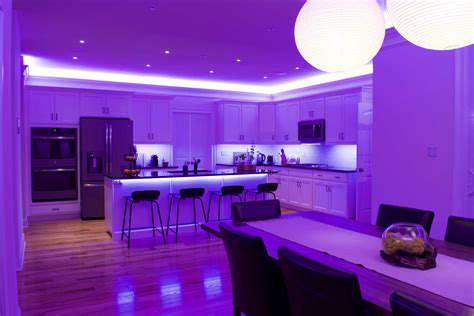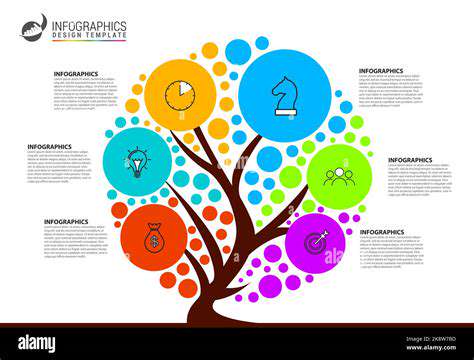How to Plan Effective Space Utilization in Apartments
Approach this process systematically, dedicating focused sessions to specific zones. Complete one area entirely before progressing to the next, as this creates visible results that maintain motivation. Remember that decluttering represents an ongoing practice rather than a one-time event - regular maintenance prevents gradual accumulation from undermining your efforts.
Strategic Storage Solutions for Apartments
Thoughtful storage transforms chaotic spaces into organized sanctuaries. Seek furniture that marries form and function, like storage ottomans that double as seating or beds featuring discreet compartments. Vertical surfaces offer untapped potential - consider wall-mounted racks for frequently used items or ceiling-hung pots in kitchens. The key lies in making storage solutions work harder without dominating visual space.
Transparent containers provide visibility while maintaining order, and uniform bins create cohesive aesthetics. Implement a labeling system that works for your lifestyle, whether color-coded tags for visual learners or detailed descriptions for those who prefer specificity. These small touches dramatically improve functionality while preserving the illusion of openness.
Maximizing Vertical Space
Floor space comes at a premium in urban dwellings, but walls often remain underutilized. Floor-to-ceiling bookcases not only store belongings but also draw the eye upward, creating the perception of height. Floating shelves maintain visual lightness while providing practical display and storage real estate. For renters concerned about damage, tension rod systems offer versatile, non-permanent solutions.
In kitchens, magnetic strips for knives and hanging racks for utensils free up valuable counter space. Bathrooms benefit from over-the-door organizers and tiered corner shelves. This upward orientation keeps essentials accessible while maintaining clear sight lines across the room.
Utilizing Multifunctional Furniture
Contemporary furniture design has evolved to meet compact living demands. Nesting tables expand for entertaining then tuck away neatly, while convertible desks transform from workspace to dining surface. The most successful multifunctional pieces perform their secondary role seamlessly without compromising primary functionality. Prioritize quality mechanisms that withstand frequent transformations.
Murphy beds represent the pinnacle of space-saving innovation, disappearing completely when not in use. For those needing occasional guest accommodations, trundle beds or inflatable mattresses stored in vacuum-sealed bags offer practical alternatives. Each piece should earn its place by solving multiple spatial challenges simultaneously.
Decluttering Your Digital Space
Digital disorganization creates invisible stress that permeates physical environments. Implement a systematic approach: unsubscribe from irrelevant newsletters, create clearly labeled folders for important documents, and establish a regular deletion routine. Cloud storage services with robust search functions prevent digital hoarding while ensuring access to essential files.
Physical devices also require attention - cable organizers prevent tangled nests, and designated charging stations keep counters clear. A streamlined digital ecosystem complements an orderly physical space, reducing cognitive load and enhancing overall well-being.
Choosing the Right Storage Solutions
Effective storage begins with honest assessment of actual needs rather than aspirational fantasies. Measure available space precisely and inventory items requiring homes. Modular systems adapt as needs change, offering long-term flexibility that static furniture cannot match. For small or irregular spaces, custom solutions often prove more efficient than mass-produced options.
Creating a Minimalist Mindset
Minimalism transcends aesthetics to become a philosophy of intentional living. Regularly question whether possessions serve your current life rather than past versions or future possibilities. Implement the one in, one out rule to maintain equilibrium. Focus on quality over quantity - a few well-chosen pieces spark more joy than crowded collections.
This approach cultivates appreciation for what you have while reducing the mental burden of excess. As physical clutter diminishes, mental clarity often follows, creating space for creativity and relaxation.
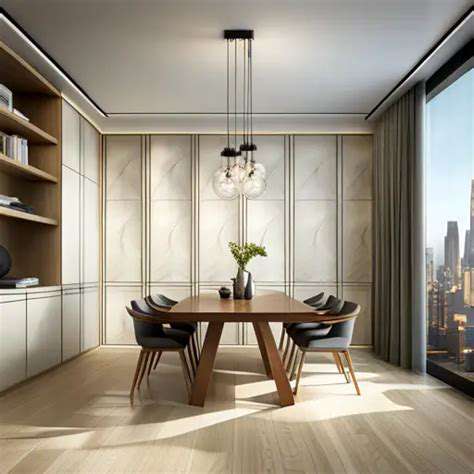
Multi-Functional Furniture: A Game Changer
Maximizing Space with Versatility
Innovative furniture design has revolutionized small-space living through intelligent multipurpose solutions. Contemporary pieces now incorporate hidden functions that reveal themselves only when needed, like dining tables with pop-up extensions or bookshelves containing fold-down desks. This approach maintains clean lines during daily use while providing expanded functionality for special occasions.
When evaluating multifunctional options, consider frequency of transformation - mechanisms should withstand regular use without frustration. Test pieces in person when possible, assessing both primary and secondary functions. The most successful designs feel intuitive rather than compromised in either configuration.
Adaptability for Evolving Needs
Life transitions demand flexible environments, and adaptable furniture grows with changing circumstances. Convertible cribs that transform into toddler beds exemplify this principle, as do expandable dining sets that accommodate growing families. Investing in adjustable pieces reduces long-term costs and environmental impact by eliminating the need for frequent replacements.
Streamlining Storage Solutions
Discreet storage integrated into furniture maintains visual calm while keeping essentials accessible. Look for beds with hydraulic lift mechanisms revealing expansive storage compartments, or coffee tables with flip-top lids concealing charging stations and remote controls. These solutions prevent clutter from accumulating in visible areas while maintaining easy access to frequently used items.
Aesthetic Integration and Design
Modern multifunctional pieces now rival traditional furniture in aesthetic appeal. Designers have mastered concealing practical elements within stylish forms, creating pieces that enhance rather than compromise decor. The best examples maintain design integrity in all configurations, avoiding the folded-away look that plagued earlier space-saving attempts.
Cost-Effectiveness and Sustainability
While initial investments may exceed single-purpose alternatives, multifunctional furniture often proves economical over time. Dual-purpose pieces reduce the total number of items needed, saving both money and space. Additionally, well-constructed adaptable furniture withstands years of use across life stages, reducing waste associated with disposable decor trends.
Clever Storage Solutions for Small Spaces
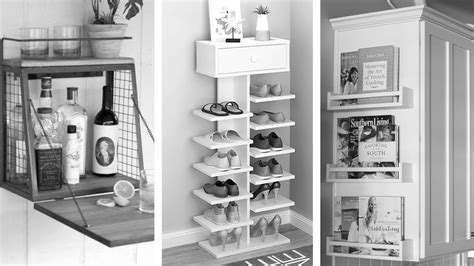
Maximizing Space in Tiny Apartments
Compact living demands creative solutions that transform limitations into opportunities. Every square inch requires intentional planning, from the space beneath stairs to the area above doorways. Custom built-ins often provide the most efficient use of irregular spaces, though modular systems offer flexible alternatives for renters.
Vertical Storage Solutions
Wall space represents untapped potential in cramped quarters. Floor-to-ceiling shelving systems create visual height while providing ample display and storage real estate. Magnetic boards in kitchens hold spices and utensils, while pegboards in offices or craft rooms keep supplies accessible yet organized. The key lies in maintaining visual cohesion through consistent materials and colors.
Multi-Functional Furniture
The most effective space-saving furniture serves multiple purposes without appearing overtly utilitarian. Storage benches in entryways provide seating while concealing seasonal items, and expandable dining tables accommodate both daily meals and occasional guests. Prioritize pieces that enhance rather than compromise daily routines.
Innovative Use of Wall Space
Walls can shoulder storage burdens that might otherwise overwhelm limited floor space. Fold-down desks create instant workspaces that disappear when not in use, while wall-mounted drying racks in laundry areas conserve precious square footage. Even narrow gaps between appliances can house pull-out storage for cleaning supplies or pantry items.
Creative Storage Solutions for Clothes
Compact dressing solutions maintain wardrobe accessibility without sprawling closets. Vacuum storage bags dramatically reduce bulky seasonal items, while cascading hangers maximize vertical closet space. For small bedrooms, clothing racks with integrated shelves provide open storage that prevents the closed-in feeling of traditional wardrobes.
Out-of-Sight Storage
Concealed storage maintains visual serenity in tight quarters. Platform beds with built-in drawers utilize often-wasted space, while ottomans with removable tops offer discreet storage for living room essentials. The psychological impact of hidden clutter should not be underestimated - what remains unseen creates mental breathing room.
Decluttering and Organization
Effective storage begins with thoughtful curation. Implement the 90/90 rule - if you haven't used an item in the past 90 days and don't anticipate needing it in the next 90, consider letting it go. This pragmatic approach prevents storage solutions from becoming enablers of accumulation rather than tools for organization.
Mindful Room-Specific Strategies

Optimizing Your Bedroom
Sleep sanctuaries thrive on simplicity and tranquility. Limit bedroom functions to sleep and relaxation, removing work materials or exercise equipment that create mental associations with activity rather than rest. Choose bedding materials that regulate temperature effectively, as thermal comfort significantly impacts sleep quality.
Light pollution disrupts circadian rhythms, making blackout solutions essential for urban dwellers. Consider layered window treatments that allow light control throughout the day, combining sheer panels for privacy with blackout liners for complete darkness. White noise machines or earplugs can mitigate disruptive sounds in noisy environments.
Enhancing Your Workspace
Productivity flourishes in intentionally designed environments. Position desks to benefit from natural light without creating screen glare, and incorporate task lighting for focused work sessions. Cable management systems prevent visual clutter that subconsciously distracts, while desktop organizers keep essential tools within easy reach.
Biophilic design elements like live plants or nature photography reduce stress and enhance creativity. Adjustable-height desks accommodate both seated and standing work positions, promoting movement throughout the day. Designate specific zones for different task types to create mental boundaries between work modes.
Cultivating a Mindful Kitchen
Efficient kitchens minimize unnecessary movement through strategic organization. Store items near their point of use - baking supplies near the mixer, spices by the cooktop. Clear countertops invite culinary creativity, so reserve this premium space for daily-use appliances only. Open shelving, when thoughtfully curated, creates accessibility while limiting accumulation.
Meal preparation becomes meditative when tools are organized and accessible. Quality knives and well-maintained cookware transform cooking from chore to pleasure. Designate a kitchen command center for meal planning and grocery lists, preventing paper clutter from spreading across surfaces.
